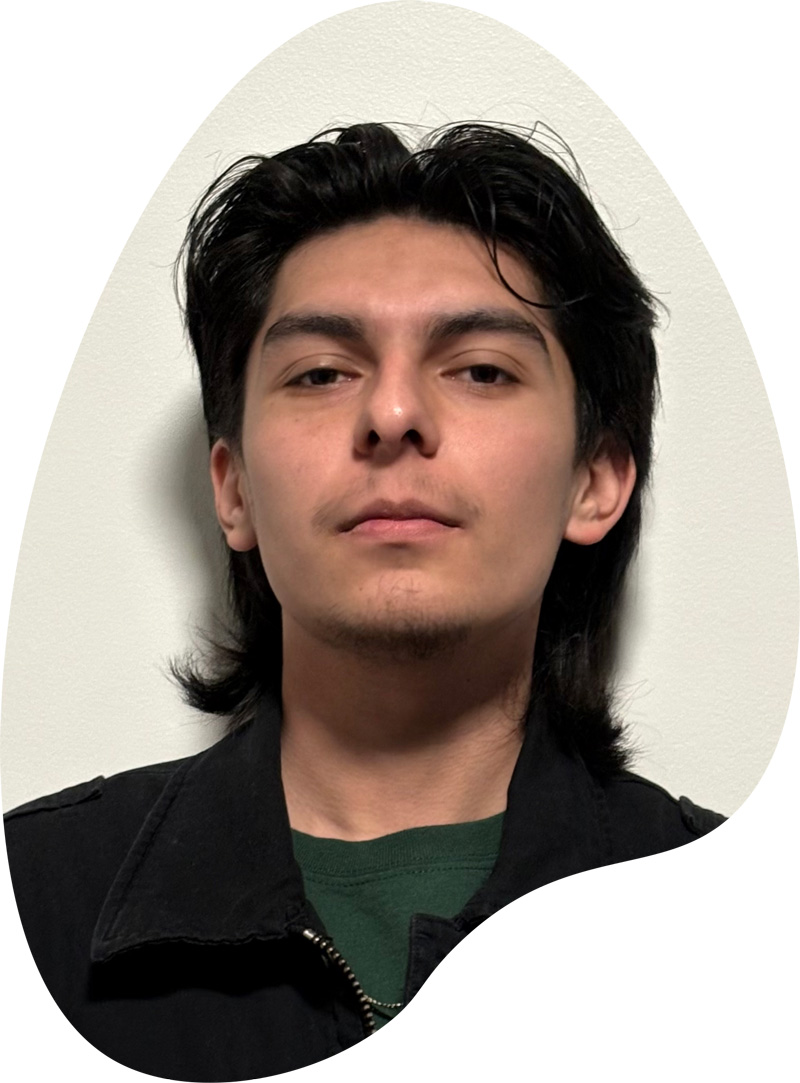
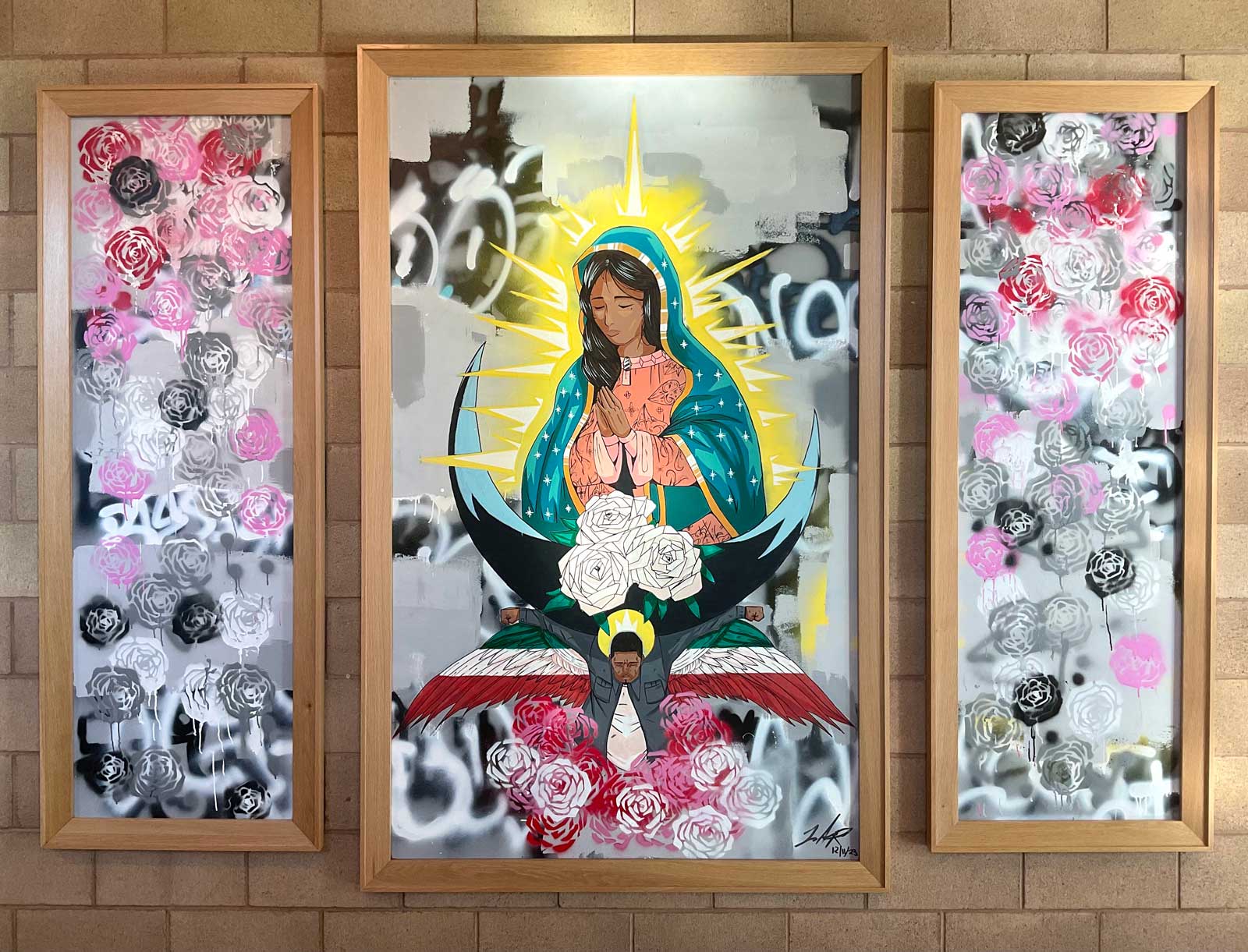
La Virgen de Guadalupe

Height: 96" x Width: 132" | Material(s): Wood for the canvas, gray primer, spray paints, Sharpies and acrylic paint | Process(es): Created the original drawing digitally and projected it onto the canvas. Painted on the stencil | Citation(s): La Virgen de Guadalupe | Idea(s): My personal vision of La Virgen de Guadalupe. Was inspired by Chicano art and 80's cell shading | Curatorial Note: Authentic reinterpretation of religious iconography to communicate modern culture and people.
Jose Alberto Rojas
Student statement
Student statement
Does your work reference or draw on a contemporary or historical artmaking style, practice, or tradition? If so, please explain.
The mural takes inspiration from an incredibly important icon of Mexico. La Virgen de Guadalupe is considered by Mexicans to be an apparition of the Virgin Mary. However, in her design she appears to be a mix of Spanish and Indigenous blood contrary to the white-skinned appearance of the Virgin Mary. The second piece has a depiction of the Mexica god of death and underworld, Mictlantecuhtli. I took heavy inspiration from multiple sources and artists to create a more "realistic" take on the figure.
How did this artwork relate to your sustained investigation inquiry?
Mexican culture and street art in an authentic way and remove stereotypes affecting both? "La Virgen de Guadalupe" was the real breaking point in this sustained investigation. I wanted to show that beautiful art can be found anywhere in the world and not just in curated exhibits. This is why I painted her over a wall of graffiti. The graffiti has two messages attached to it,one being that graffiti can be intricate and incredible art in its own regard, as well as it being a form of expression for many artists. The other is how officials and the general public see graffiti and vandalism and work tirelessly to cover it and stop people from expressing themselves. Which is why I painted large chunks of the board with mismatched primer paint in order to portray that act of silence. Drawing her on top of it not only added great contrast from the vibrant colors, but showed that art can exist everywhere. I also painted her to be a little darker in order to really show that she is Latina. I changed the angel at the bottom to a man to show that it is the people that hold her up and not just a divine being. I also made the original sketch to be in a similar style to Chicano tattoos, furthering the connection. The second piece is a little more disconnected; however, it still presents strong Mexican themes. In our culture we honor and celebrate the dead, especially during celebrations like Dia de los Muertos. Not only that but music is an incredibly important part of our culture, so making a cassette cover for an album about death felt fitting. Not only that but the title "Miquitzli Innocente" translates to “Innocent Death,” which may or may not be commentary to the acts of violence committed against Latinos during the mid 1900s.
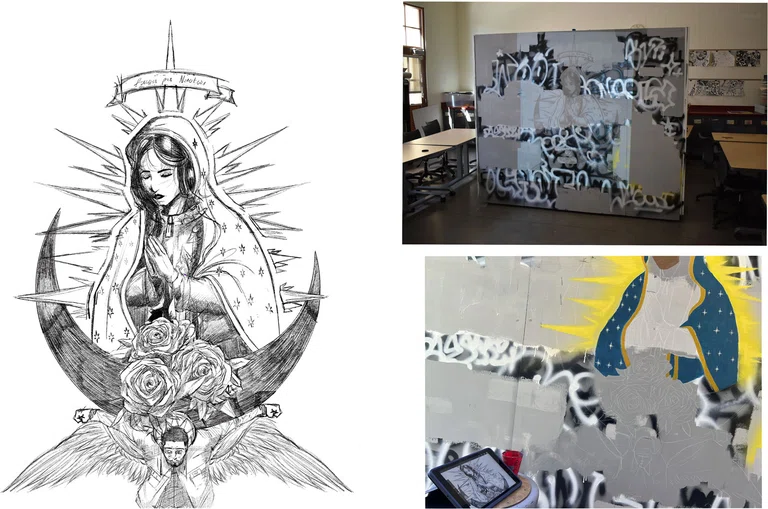
Material(s): Collage on Photoshop | Process(es): After sketching the design, I projected it onto the wall and began to paint with acrylic | Citation(s): La Virgen de Guadalupe | Curatorial Note: Exciting and helpful resource images
How did you choose your inquiry?
My culture is an incredibly important part of my identity. I am the son of two Mexican immigrants and so grew up with this culture. Early in my childhood I remember being against this part of myself. "I'm not Mexican; I'm Californian!" I'd tell my parents. However, as I grew older, I realized that being Mexican is actually not something to be ashamed of but to embrace! I also come from a poorer neighborhood right outside of downtown, and there I would always see these tags and pieces plastered on the walls. I also live close to the historical Chicano Park. There the Coronado Bridge towers over the park. On those pillars, instead of leaving them as dull gray, the people painted beautiful murals depicting culture and history. I was mesmerized. When thinking about my last sustained investigation senior year, I knew I really wanted to say something and make an impact. So I decided that I wanted to incorporate these two massive parts of my history and culture into these pieces.
Describe how your inquiry evolved as your sustained investigation developed.
My inquiry never particularly evolved throughout the process. I always made sure that all of my pieces were in some way related to at least a part of the inquiry. I think I loosened some of the ideas towards the end; however I still continued to carry that same message.
How did you practice or improve your written inquiry statement as your portfolio developed?
I continued to practice my inquiry throughout the sustained investigation by making sure each of the pieces presented connected to the inquiry in some way shape or form. In some it might be just a traditional pattern to create a background for a portrait. For others it could have just appeared as concept pieces for a graffiti piece or mural.

It began with, how do I portray my culture? Originally graffiti and street art played an important role; then I realized that there was a more personal connection to explore. How to incorporate historical elements of my Mexican culture as well as people in my life.
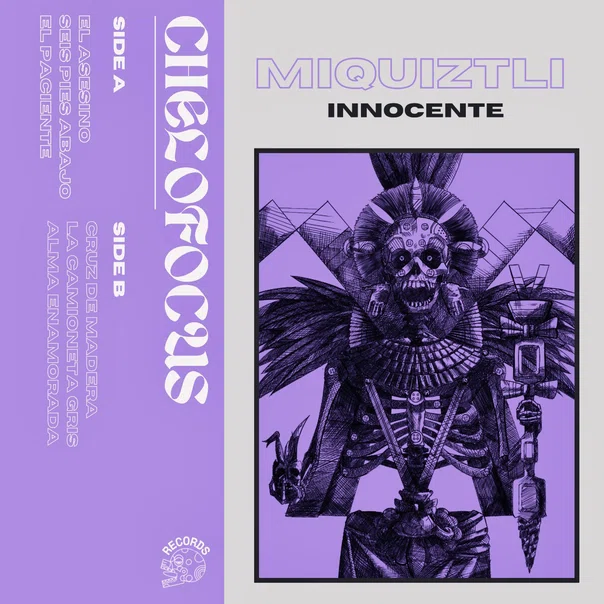
Miquitzli Innocente

Height: 18” x Width: 144” x Depth: 0” | Material(s): 3'x6' MDF woodblock with split image, oil based ink, wood carving tools, dremel, steamroller | Process(es): timeline progression of my interpretation of the American Dream from industrial revolution to today | Idea(s): experimented with spray paint as medium, wanted an interactive piece to show physicality of metaphor | Curatorial Note: Strong well crafted large scale woodblock that continues to support the ideas communicated in the student statement.
How did you practice or improve the written statements accompanying each artwork in your portfolio (ideas, materials, process(es), and citations) to best communicate your intentions?
The written statements went through many drafts in order to convey what I wanted to say. When you're submitting your portfolio, you only have a really small amount of characters to work with. So with the help of my teacher, we were able to condense the written statements to say what needed to be stated.
How did your art teacher support your artistic development?
In all honesty, my teacher was really hands off creatively throughout the entire process. I think she had a lot of faith in me to do the work I wanted to do, which I'm very grateful for. That is not to say that she didn't help me at all! She was my stone throughout the entire process for the mural. She helped me get all the materials, set up the projector, and helped me pick colors. She let me work during lunch and after school. Without my art teacher, I don't think I would've ever been able to finish that piece, or get it to the level that it is at now. Thank you so much, Mrs. Rybicki!
How did your school leadership (principal, assistant principal, guidance counselor, etc.) support your growth as an art student? This could be classroom visits, attending art shows, talking to you about your goals, etc.
Well, it's a bit of a long story, but there were many people in the faculty and staff that really helped me get the mural specifically off the ground. Mainly it was Mrs. Wallace that helped get the project in the first place. She was the one that really helped get everything into motion and helped get the approval from the principal and board to have the piece installed permanently in the school. She was present during the initial unveiling of the piece. She also visited me during the end of the year art exhibition. She was always with me throughout the entire process, and I couldn't be more thankful.
What is your advice to other AP Art and Design students?
First and foremost, be proud of yourself and your work. Everyone who is able to get into these classes is there because they have shown incredible work. Don't sell yourself short in any way. That is not to say you should brag and put others down, but allow yourself to feel good about your stuff. Next, pick an inquiry that you are genuinely passionate about. It's really easy to get burned out in these classes because of how fast-paced they are. So by picking something important to you, it will give you the motivation to keep on working through. The last piece of advice is to try and get out of your comfort zone. Try new mediums, new ideas. Doing the same thing over and over will bore you. Art is a form of expression, and by not allowing yourself to try new things, you may never be able to truly express yourself and your ideas in their most authentic form.
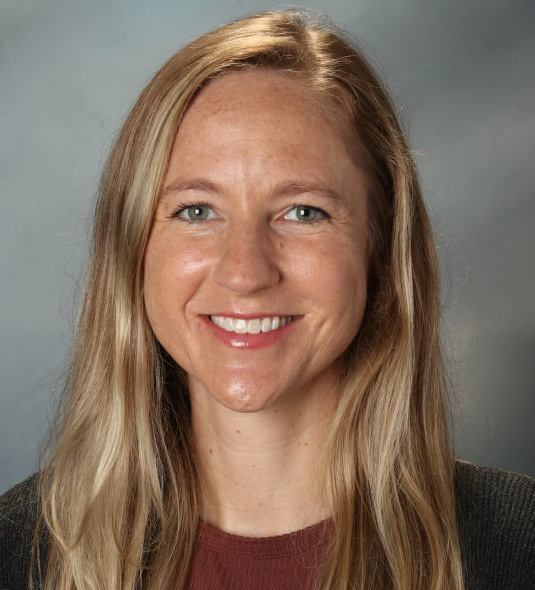
Amanda Rybicki
Art Teacher & Visual Arts and Performing Arts Department Chair
Cathedral Catholic High School, San Diego, CA, USA
Teacher statement
Teacher statement
The AP Art and Design course supports inquiry-based personalized learning in the sustained investigation portfolio component. What strategies helped you guide students through inquiry?
I believe one of the most important parts of guiding students is fostering an environment where they feel comfortable and confident in engaging in dialogue about their work and others and contributing to class critiques.
How did you scaffold writing into the art-making and thinking processes?
Students practice writing in each stage of the making process, starting with "brain dumps" of mind maps and word association. Then, they add writing into project plans and sketches. They write reflections about each project. Additionally, notes from critique are sometimes transcribed so that students may look back at what they spoke about when presenting their work.
How did you support skill development AND inquiry in the AP Art and Design curriculum?
Early on I require students to use new media to step out of their comfort zone. Sometimes they think their only strength lies in a certain drawing or painting media that they have used frequently, but then they discover a passion and skill within a new media that they never thought to try. The experimentation with media as well as continued research into their topic of inquiry fuels discovery.
How did you structure practice, experimentation, and revision into your AP Art and Design curriculum?
Students are required to complete thumbnail sketches of many compositions (going beyond the first thought). I encourage them to test media in an intuitive way without worrying about what they're making yet. We analyze contemporary art pieces to determine compositional strategies, color theory, or techniques that the students find engaging to help them understand why they are drawn to certain visual expressions.
How do you support your students in the Selected Works portfolio component?
I meet with students to discuss my observation of strong concepts and technical pieces. This helps them determine which art might be good to include in the Selected Works and encourages them to further develop these existing strengths and new ones.
What formative and summative assessments helped guide your students through your AP Art and Design curriculum?
I have a lot of in-class discussions in small groups or one-on-one. We also research contemporary artists looking for themes or different ways of expressing ideas. I believe that having conversations with my students about ideas is just as important as having discussions about the artwork they create.
What creative programming (i.e., exhibit spaces, mentoring programs, curricular supports) have you implemented to support AP Art and Design students?
Many of my AP Art and Design students complete my Drawing & Painting course the year prior. So, many of them have had me as a teacher for one or two years already. Establishing a good relationship with my students over the years allows them to come into the AP class already having a sense of comfort and confidence, and they are open to expressing personal ideas.
What did you learn from working with your student?
I learn so much from my students. I am always impressed with their support of one another and how they express genuine excitement about each others' art. It brings me so much joy when the year progresses and without being prompted, they come into class excited to tell one another about something they came across that made one of them think of another's S.I. inquiry.

Jose Alberto Rojas

